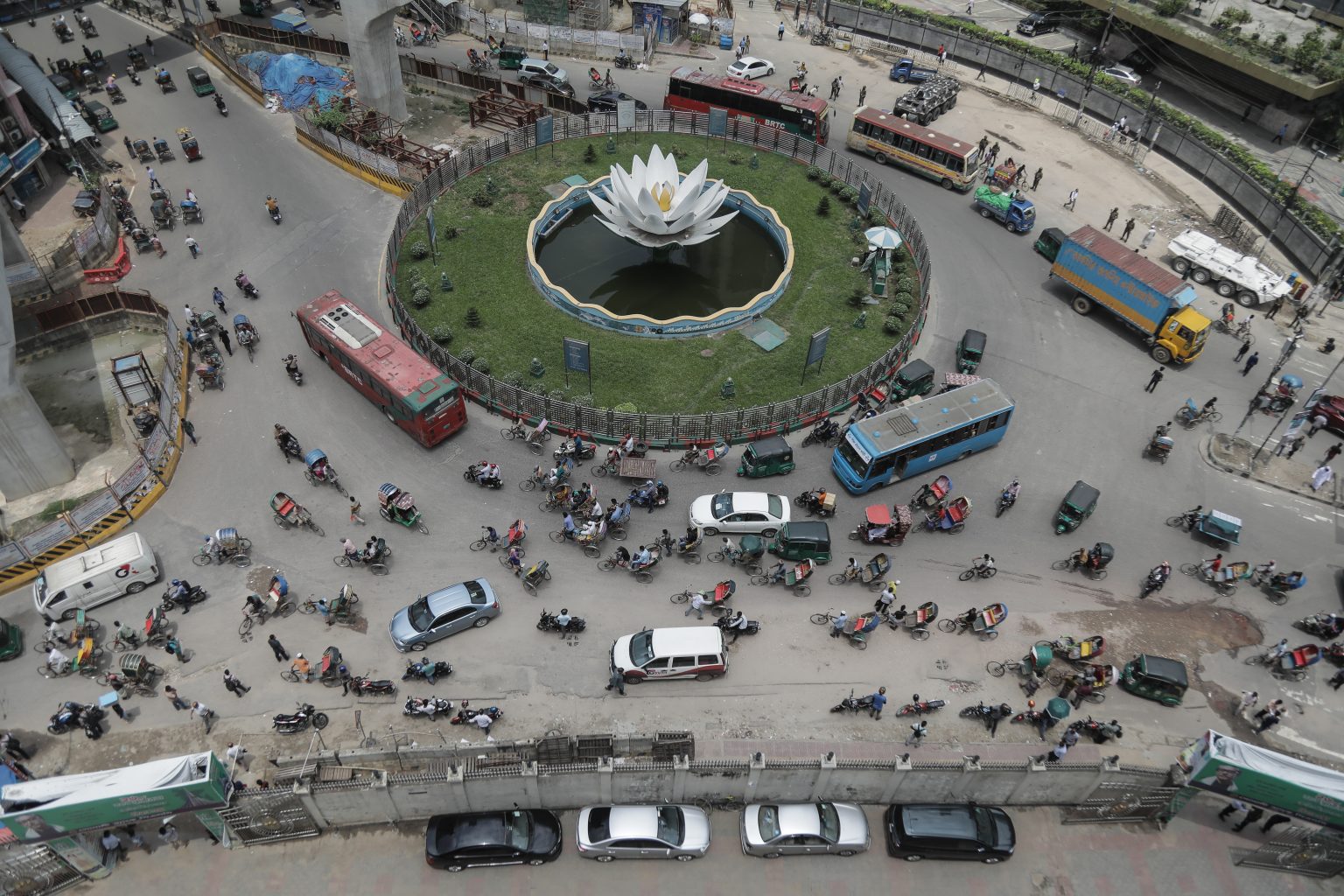With GDP growth slowing, inflation surging, and the taka sliding against the dollar, Bangladesh’s economic engine has sputtered just as regional peers accelerate, according to the Financial Stability Report 2024.
Prepared by the Bangladesh Bank and released on Monday, the report shows that real GDP growth fell to 4.22% in FY24 from 5.78% a year earlier, while average inflation climbed to 9.73 per cent and the taka lost 9 per cent of its value against the dollar in 2024.
It also notes that exports and imports contracted, foreign direct investment dropped by more than 11 per cent, and a banking system once viewed as a pillar of stability now faces dangerously thin capital buffers.
By contrast, the report highlights that India, Sri Lanka, and even Pakistan are positioned for faster growth and lower inflation.
Mohammad Shahriar Siddiqui, the central bank’s acting spokesperson and head of its Financial Stability Department, attributed the slowdown to persistent inflation, political unrest in the second half of 2024, and structural bottlenecks – particularly in the garment sector, which accounts for the bulk of exports.
He maintained that the economy is recovering, pointing to reserves above $30 billion, liberalised interest and exchange rates, and sufficient liquidity.
However, the report ultimately depicts a more complex picture of an economy at a crossroads.
Growth: Trailing the region
According to the report, Bangladesh’s gross domestic product grew 4.22 per cent in FY24, with provisional data pointing to an even weaker 3.97 per cent in FY25.
By contrast, India grew 7.2 per cent last year and is projected to expand 6.4 per cent this year. Sri Lanka, emerging from crisis, managed 5 per cent growth, while Pakistan is expected to shift from contraction to 2.5 per cent growth, the report notes.
Inflation causes persistent pain
The report describes inflation as the country’s “Achilles’ heel”. Consumer prices rose an average of 9.73 per cent in FY24, with food up 10.66 per cent and non-food items 8.86 per cent.
By comparison, India’s inflation in June 2025 stood at just 2.1 per cent, while Sri Lanka recorded deflation of 0.3 per cent. Pakistan’s official forecast projects only a modest increase in prices.
Shahriar Siddiqui argues that point-to-point inflation is edging lower but concedes that supply chain disruptions and higher energy costs continue to erode purchasing power and dampen investment.
External finances show a mixed picture
According to the central bank report, the taka’s 9 per cent depreciation underscores Bangladesh’s vulnerability to external shocks. To stabilise the currency, the Bangladesh Bank sold $7.05 billion and bought $2.69 billion last year. External debt now stands at about $103 billion, with short-term liabilities equal to roughly 53 per cent of reserves.
Shahriar Siddiqui said this ratio demonstrates Bangladesh’s ability to meet its obligations, while highlighting a rise in reserves – from around $26 billion in December 2024 to more than $30 billion by June 2025 – enough to cover four months of imports.
The report also notes that remittances grew by more than 10 per cent, providing a crucial buffer. Yet it cautions that Bangladesh remains heavily reliant on migrant workers’ earnings and exposed to global labour market risks.
While the adoption of a market-based exchange rate has helped reduce external risks, the report warns that the local currency remains under pressure.
Investment and credit slump
According to the report, foreign direct investment (FDI) fell 11.83 per cent in FY24. Domestic credit grew 9.80 per cent, split between private sector credit growth of 9.84 per cent and public sector credit growth of 9.66 per cent.
The ratio of private to public sector lending has improved slightly but is still too low to underpin a sustained investment boom, it mentions.
Banks and NBFIs: Capital under pressure
The report’s most alarming findings concern the financial sector. By December 2024, the banking system’s aggregate capital adequacy ratio (CAR) had fallen to 7.31 per cent — below the 8 per cent minimum required under Basel II and well short of the 10.5 per cent benchmark under Basel III. Just two years earlier, it stood at 11.83 per cent.
Bangladesh’s capital buffers have been eroded by a surge in risk-weighted assets and a sharp rise in bad loans.
Bad loans surge amid scrutiny
Non-performing loans (NPLs) have more than doubled over the past year, reaching about 24% of outstanding loans by March 2025, the report finds.
Speaking to Times of Bangladesh, Bangladesh Bank’s acting spokesperson Shahriar Siddiqui argued that these grim figures reflect the central bank’s effort to uncover the true scale of problem loans.
“We plan to identify the actual non-performing loans – we’re not going to sweep anything under the carpet,” he said.
The report agrees that imprudent lending and weak oversight have driven the surge in bad loans. However, it also notes that most banks continue to meet liquidity coverage and net stable funding requirements, suggesting that stress is concentrated in a minority of institutions.
Stress in non-bank financiers
The outlook for non-bank financial institutions (NBFIs) is even more troubling. Stress tests show that only 14 of the 35 NBFIs operating in Bangladesh could withstand a severe shock involving large borrower defaults, plunging collateral values, and sharp swings in interest and exchange rates.
The remaining 21 would see their capital wiped out. Some NBFIs are already grappling with capital shortfalls and weak loan recovery, according to the report.
Policy response and outlook
The report recommends a range of reforms, including strengthening corporate governance and tackling non-performing loans more aggressively through tighter oversight and restructuring.
The central bank also aims to maintain flexibility in the exchange rate, improve transparency in currency trading, diversify exports beyond garments, and promote sustainable finance. Investment in digital infrastructure and cybersecurity, along with regular macro stress tests, is likewise deemed essential.


